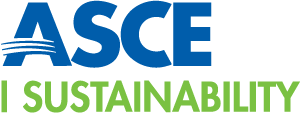Challenging issues such as climate change, urbanization, and the rapid pace of technological advancement create opportunities. These issues also require serious re-evaluation of current professional practice and standards. To address this state of affairs, ASCE has outlined a roadmap to transform the profession.
Four priorities for change
Priority 1
Sustainable project development: do the right project
Economic primarily drive current project development methodologies. To achieve sustainable infrastructure, engineers must approach projects and engineering in a new way. The focus of our engineering efforts must shift from the product of our work—the stormwater management system, the bridge, the building—to the needs and benefits that the project aims to address. We must consider all possible alternatives before projects and programs are conceived, executed, and operated—in other words, to “do the right project.”
Priority 2
Standards and protocols: do the project right
While “doing the right project,” engineers must still “do the project right.” Clearly, previously reliable standards and protocols no longer suffice. Current prescriptive standards may apply in conditions of stationarity. However, where nonstationarity (a condition where statistical properties, such as mean or variance, of a data set are not constant over time) is prevalent, we must develop new standards and protocols that are performance-based rather than prescriptive. Those standards must address sustainability and resiliency of infrastructure, to ensures communities safety and its ability to recover from natural and manmade disruptions.
Priority 3
Expand technical capacity
To apply the principles of sustainable development, expanding engineers’ abilities and capacities beyond the currently accepted professionalism and technical skills is necessary. Achieving the necessary transformation requires civil engineers to build or expand their capacity to achieve the visions and principles of sustainable development through new training and professional development, including formal and continuing education.
Priority 4
Communicate and advocate
Transforming the civil engineering profession and delivery of sustainable infrastructure requires communication with all stakeholders and advocacy to promote acceptance and adoption. This significant transformation of the civil engineering profession requires communicating the reasons for change with members, the public, and all stakeholders. The end goal is a membership and public that demand environmentally, economically, and socially sustainable infrastructure that meets the needs of human welfare equitably and enables healthy thriving communities.


